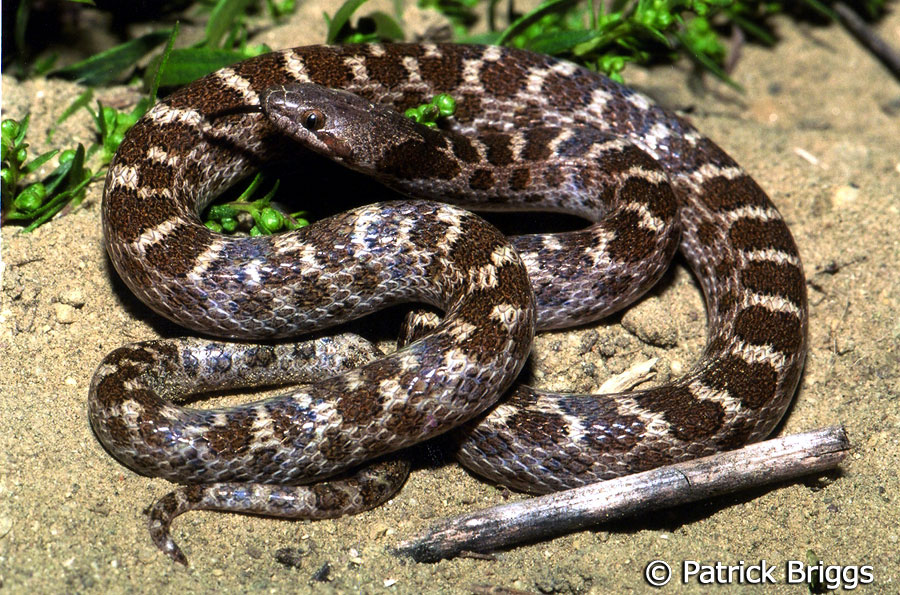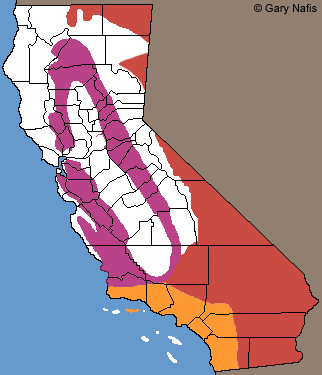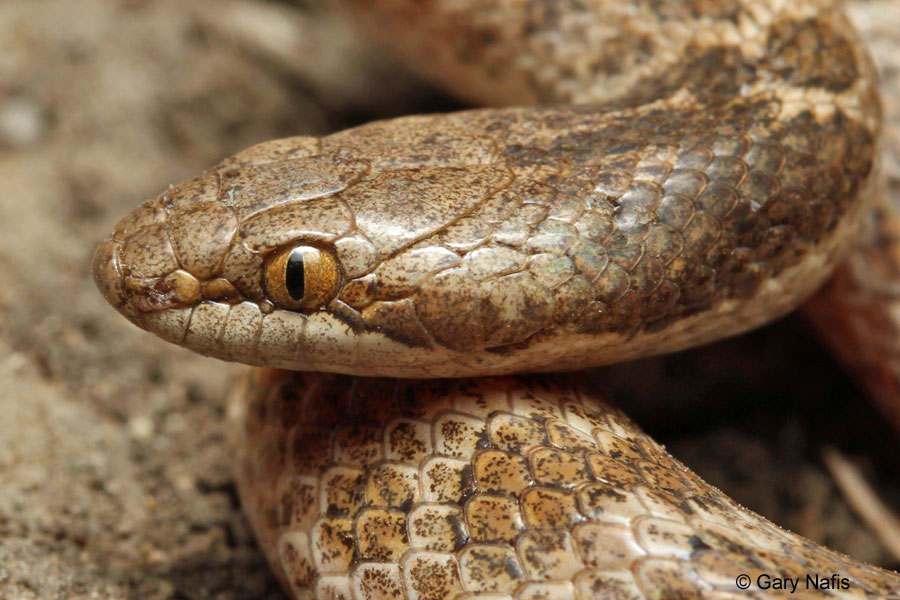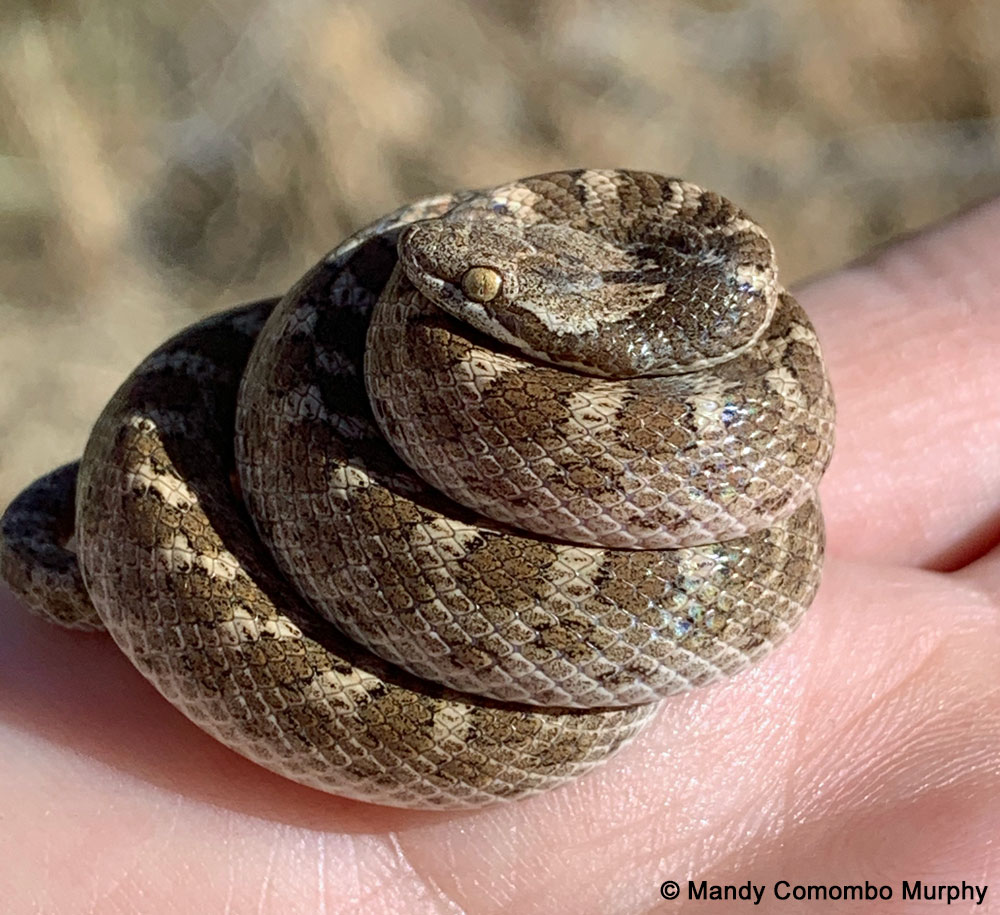
Hypsiglena ochrorhyncha
Though it may sound a bit spooky, there’s nothing to fear about this small snake—that is unless you’re a lizard or other small tasty critter.
Usually only about a foot long (though it can grow up to 26 inches in length), this slender and unique species can be found throughout much of California, including the Los Padres National Forest and Carrizo Plain National Monument.
Distribution and Appearance
Two subspecies of nightsnake occur in and around the Los Padres National Forest: the California nightsnake (H. o. nuchalata) and the San Diego nightsnake (H. o. klauberi). The California nightsnake primarily occurs north of Santa Barbara County while the San Diego nightsnake lives in the coastal mountains from just north of Point Conception to Baja California.

Both subspecies have some key identifying features to look for. Perhaps the easiest way to tell these apart from other similar snakes is their pupil shape. Unlike most non-pit vipers, the nightsnake has thin vertical rather than circular pupils. These nightsnakes also tend to be gray or brown, usually matching the color of the ground they live on, with darker blotches down their back and sides that look similar to those of a gophersnake.
Each subspecies typically has even darker blotches on or around its head, and these spots can be used to tell the two subspecies apart. The California nightsnake has blotches around their eyes and neck that connect, forming what herpetologists refer to as a collar. The San Diego nightsnake has similar dark blotches, but they don’t connect to form a collar.

Habitat and Behavior
Like many snake species in our region, the nightsnake can be found in a variety of habitats. The species prefers areas with plenty of surface cover from vegetation such as chaparral and coastal sage scrub. Nightsnakes can also be found in grassy areas and even suburban yards and gardens.

As the name implies, nightsnakes are mostly nocturnal. However, they can also be active during the crepuscular hours (around dawn and dusk). During the day the spend their time under rocks, logs, and other objects. If you’re lucky, you may see one crossing a road at night—just make sure to give it plenty of space!
Nightsnakes are rear-fanged and slightly venomous. They use the fangs in the back of their mouth to latch onto their prey—typically lizards, frogs, salamanders and even small snakes. Their fangs inject venom that subdues prey, but overall these snakes pose no threat to humans due to the location of their fangs and their weak venom.
After mating in in the spring or summer, females lay 2-9 eggs at a time. These eggs likely hatch two months later, with hatchlings only seven inches in length emerging.
Conservation Status
Though rare to see due to their nocturnal behavior, both subspecies that occur around the Los Padres National Forest are common and not considered threatened. As with any wildlife in the region, they may be impacted by activities that remove vegetation, especially in chaparral and coastal sage scrub.
For more information about nightsnakes and other reptiles, visit californiaherps.com.






